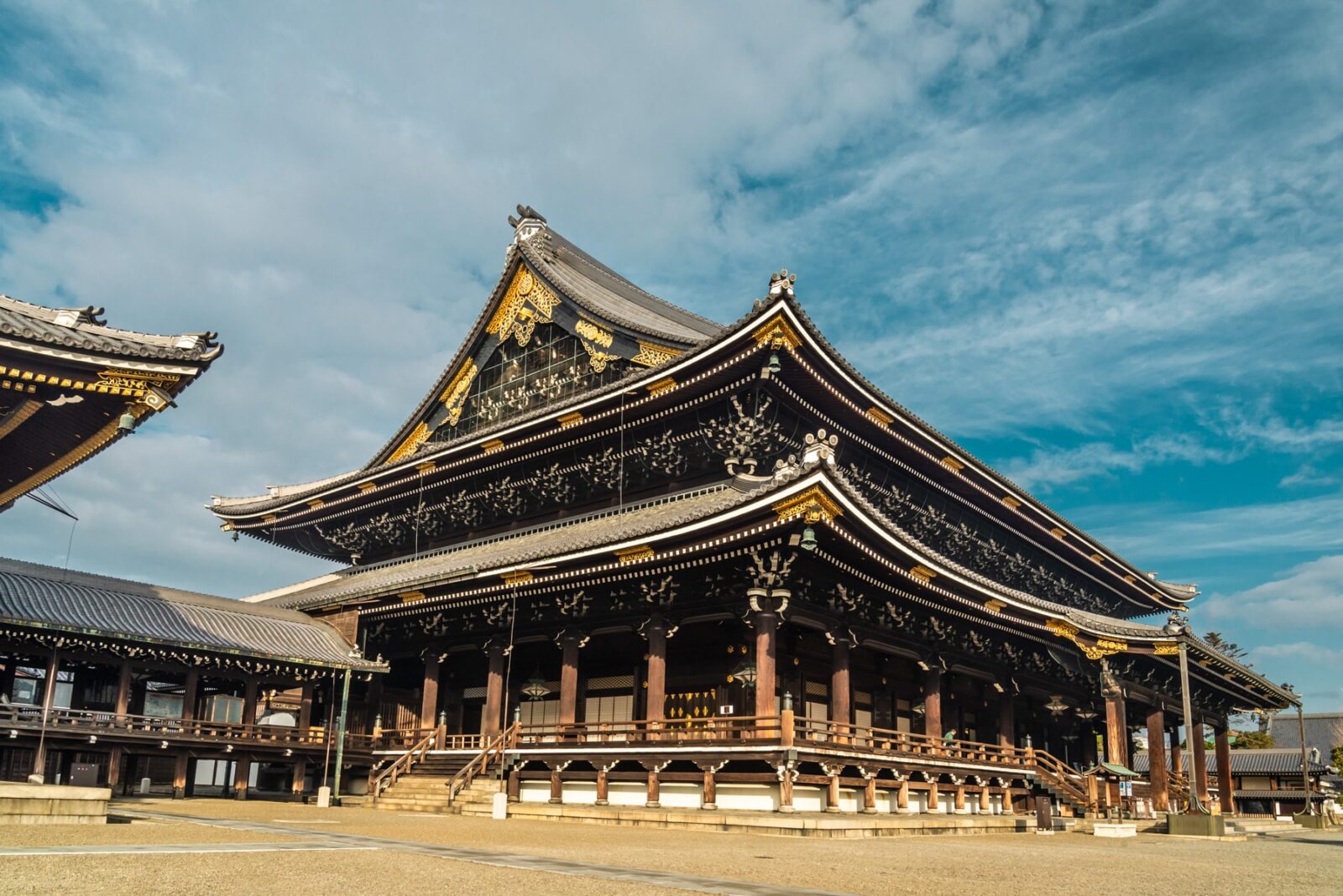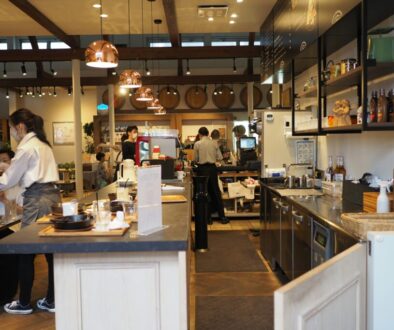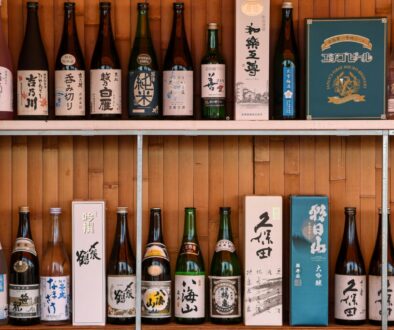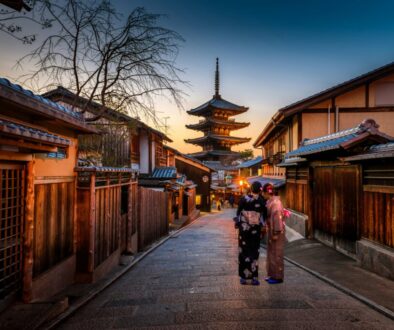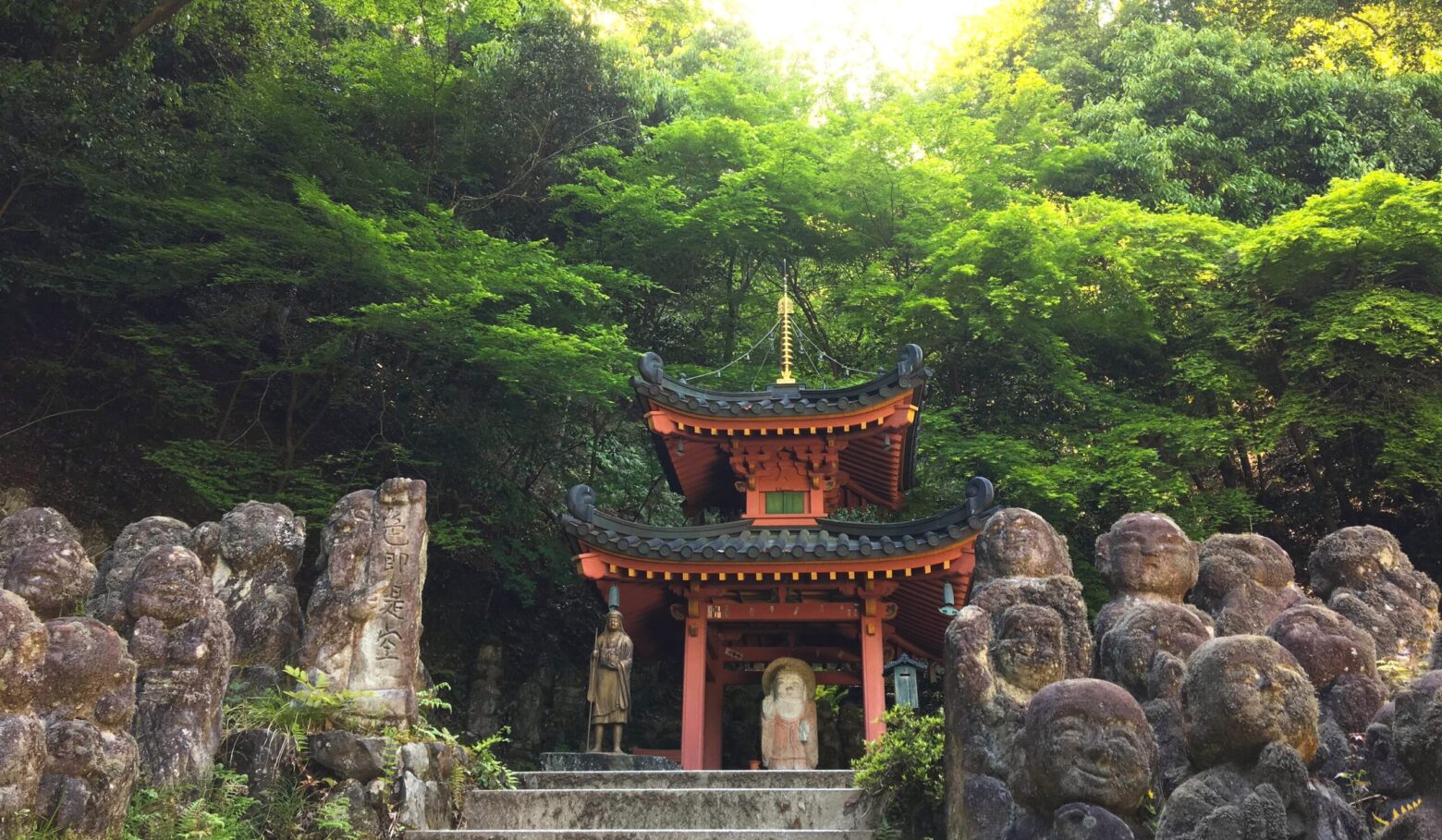
Japan is home to thousands of temples and shrines, each with its own rich history. However, there are some that stand out for their uniquely strange, mysterious, or even whimsical qualities.
From moss-covered statues with joyful expressions at Otagi Nenbutsu-ji in Kyoto to the lion-headed stage of Namba Yasaka Shrine in Osaka, these sacred spaces offer more than just spiritual solace; they spark curiosity and wonder. Whether it’s walking through the most sacred Buddhist cemetery at Okunoin Temple, ending a bad relationship at Yasui Kompiragu Shrine, or praying for love at the ancient Izumo Taisha, these places will defy your expectations. Here are ten of Japan’s unique Temples and Shrines that will spark wonder and curiosity in every traveler.
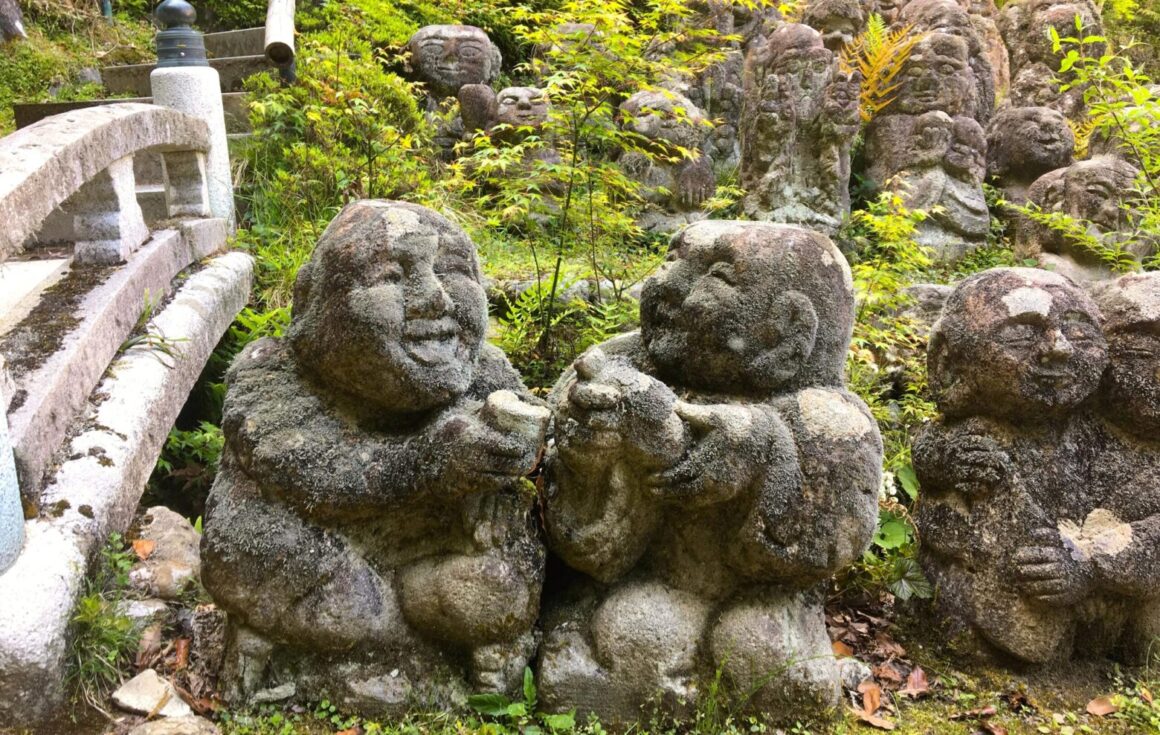
Otagi Nenbutsu-ji Temple in Kyoto
Otagi Nenbutsu-ji is a distinctive Buddhist temple nestled in the Arashiyama district of Kyoto. It is renowned for its collection of over 1,200 arhat (disciples of Buddha) stone statues. Each statue is unique, with hand-carved expressions and whimsical features.
Originally established in 766 by Empress Shotoku near Kyoto’s Gion district, the temple was relocated multiple times due to natural disasters and warfare. It was rebuilt and moved to its current location in Arashiyama in 1922 to preserve its remaining structures. Despite these efforts, a typhoon in 1950 caused significant damage to the temple.
In 1955, Kocho Nishimura, a sculptor and Buddhist monk, became the head priest and initiated extensive restoration work. From 1981 to 1991, he guided novices, who traveled there to learn sculpting under him, in carving the arhat stone statues. He encouraged the novices to express their uniqueness in the stone statues. This resulted in a diverse array of stone statues with varying fun expressions and traits. Because of this, Otagi Nenbutsu-ji is now known as a temple that blends traditional Buddhist iconography with contemporary and playful elements.
While the statues are relatively modern, they serve as a testament to the enduring nature of Buddhist teachings and the personal connection individuals can have with their faith. The playful and humanized representations of the arhat statues make the temple a welcoming space for visitors of all ages.
Otagi Nenbutsu-ji is open daily from 9:00 am to 4:15 pm, and admission is 500 yen per person. The best way to get there is by renting a bike at the Randen Arashiyama station. It takes about 15-20 minutes to bike there. Alternatively, walking is also possible, but will take around 40 minutes.
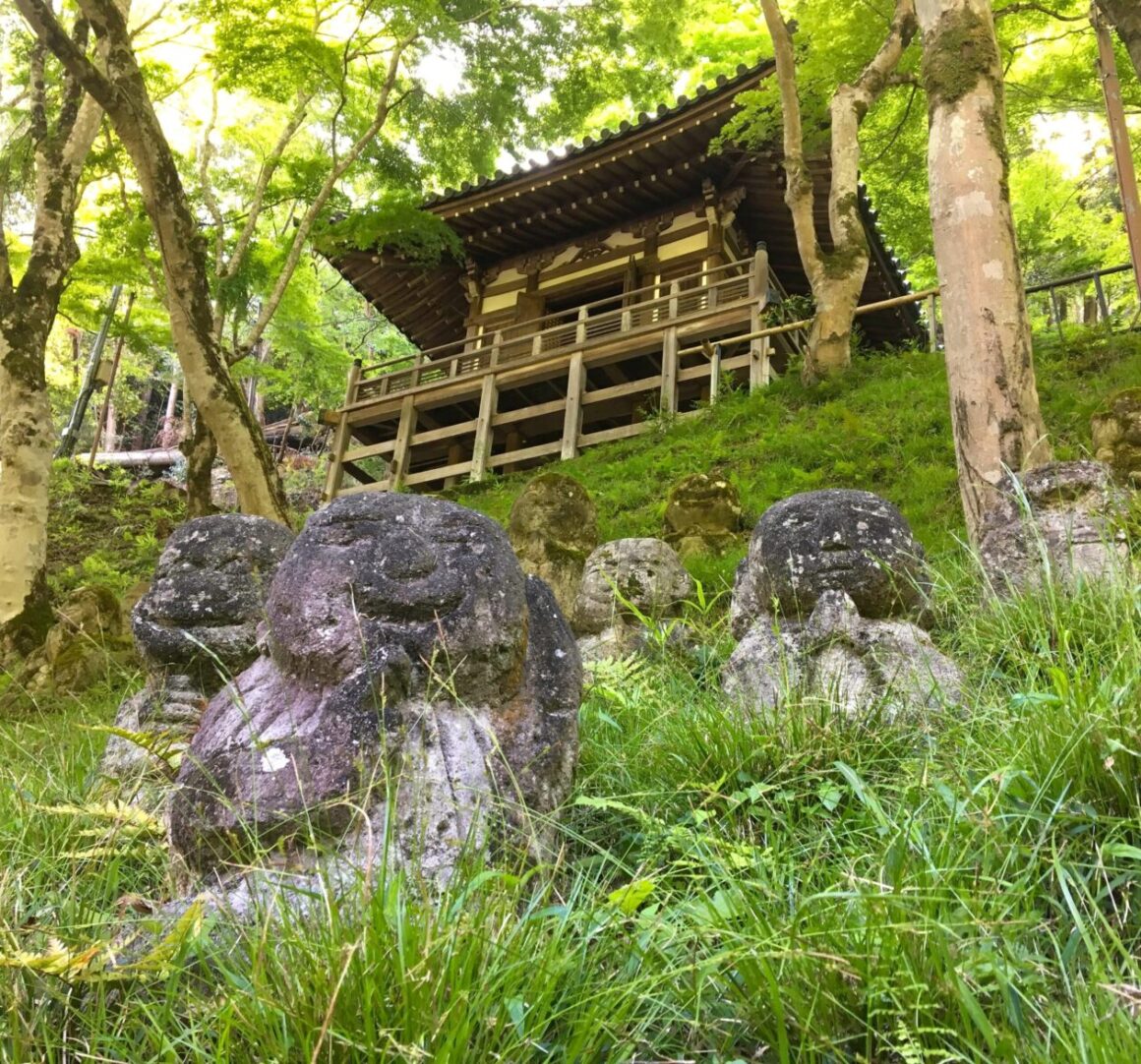
Interested in visiting this temple? Please visit their official website for more information.
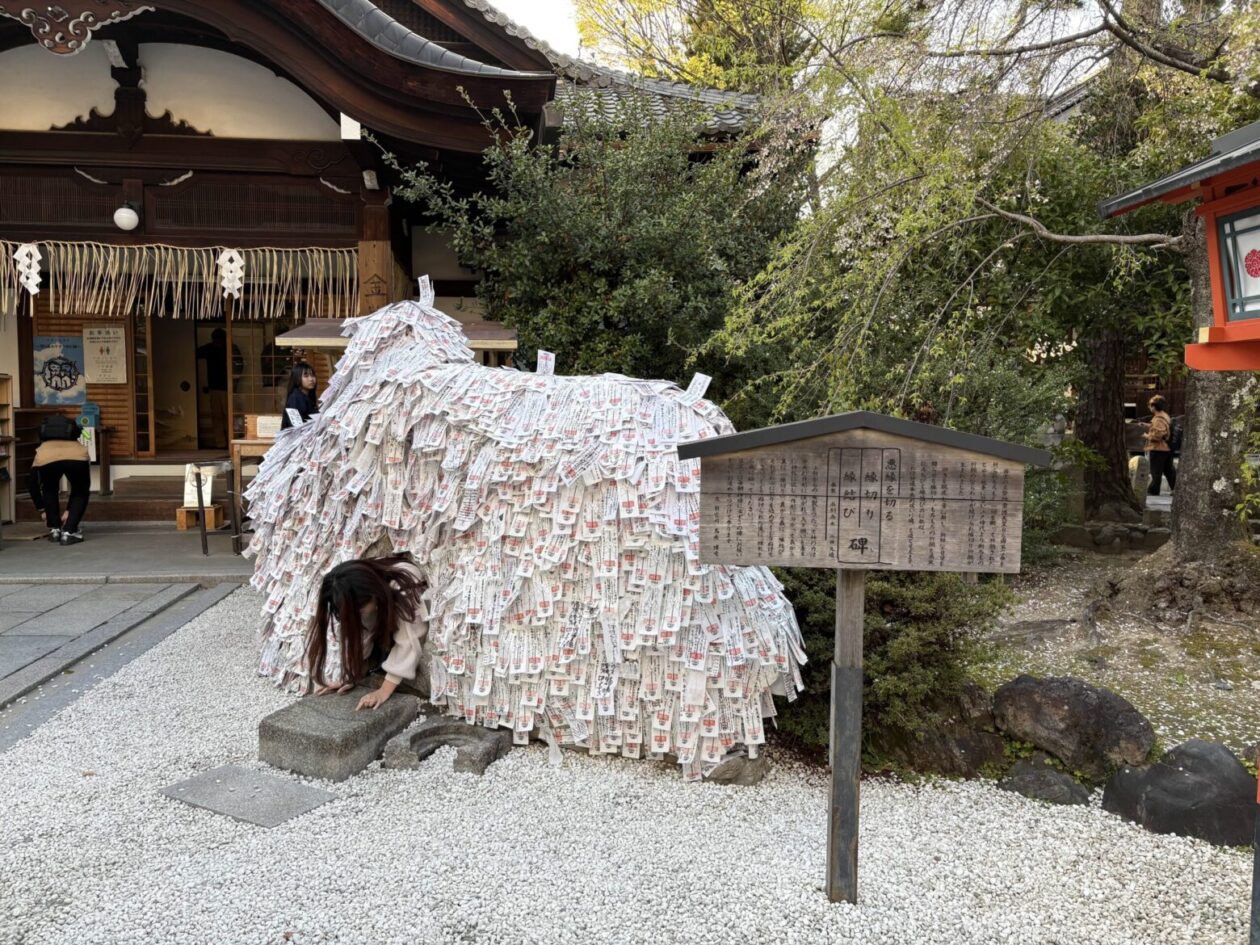
Yasui Kompiragu Shrine in Kyoto
In a quiet corner of Kyoto’s historic Gion district sits Yasui Kompiragu Shrine, a shrine famous for its mysterious “power stone” known as the Enkiri-Enmusubi Stone. It’s a popular, slightly eerie destination for those seeking a fresh start or stronger bonds.
Established in the late 7th century, it has undergone several reconstructions, with the current structure dating back to 1695. The most prominent feature of the shrine is the Enkiri-Enmusubi Stone, a large stone resembling an ema (votive tablet) with a hole in the center. This stone is believed to possess the power to sever bad relationships (enkiri) and foster good ones (enmusubi). The site of the stone is something to behold, as it is covered in paper amulets (katashiro).
Visitors write their wishes on paper amulets, crawl through the hole from front to back to sever bad ties, and from back to front to form good ones. Afterward, they attach their amulets to the stone.
Yasui Kompiragu Shrine is a short 10-minute walk from Gion-Shijo Station on the Keihan Line, making it an easy stop on anyone’s itinerary! Make sure to get there between 9:00 am and 5:00 pm in order to purchase a paper amulet.
If you have any ties you wish to strengthen or cut, come to this shrine and try its unique rituals!
For more details, check out their official website!
Higashi Honganji Temple in Kyoto
Located just a short walk from Kyoto Station, Higashi Hongan-ji Temple is one of the largest wooden structures in the world and a central hub of Shin Buddhism. Founded in the early 17th century, the temple impresses with its grand scale and serene atmosphere. It serves as the head temple of the Otani-ha branch of Jōdo Shinshū (Shin Buddhism), one of Japan’s most widely practiced branches of Buddhism.
One of its most fascinating features is a massive rope made from human hair, called kegami, and can be viewed in the temple’s Treasure Hall. During the reconstruction of the Founder’s Hall in the late 19th century, massive wooden beams were required to support the vast roof. To transport and lift these beams, ropes were braided not only from hemp but also from the donated hair of devout female followers. This act of devotion helped make the reconstruction possible and symbolizes the deep faith and communal spirit of the temple’s supporters. The hair rope serves as a poignant reminder of the role ordinary people played in preserving Buddhist traditions.
This temple is only a 7-minute walk from JR Kyoto station or a 5-minute walk from Karasuma Gojo Station, making it very easy to access. It opens early, from 6:30 am, and closes around 4:30 pm or 5:30 pm depending on the season.
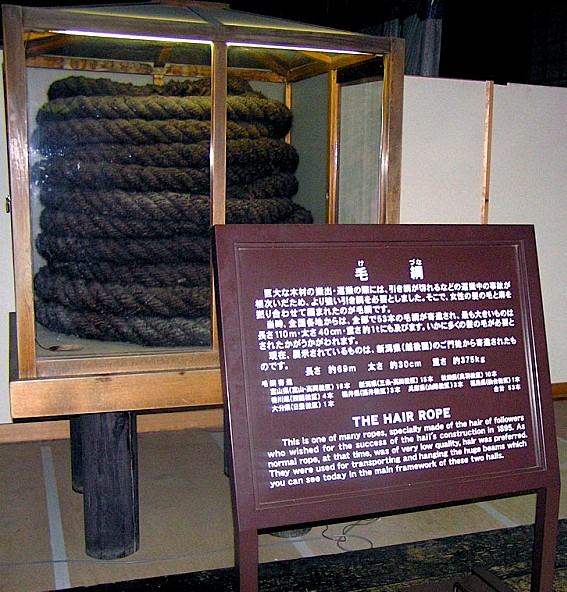
Higashi Honganji offers visitors a glimpse into Japan’s rich Buddhist heritage, architectural grandeur, and communal triumphs. Its proximity to Kyoto Station makes it an accessible and enriching destination for those exploring the cultural heart of the city.
For more information, visit their official website (Japanese only) or Kyoto City’s official travel guide website.
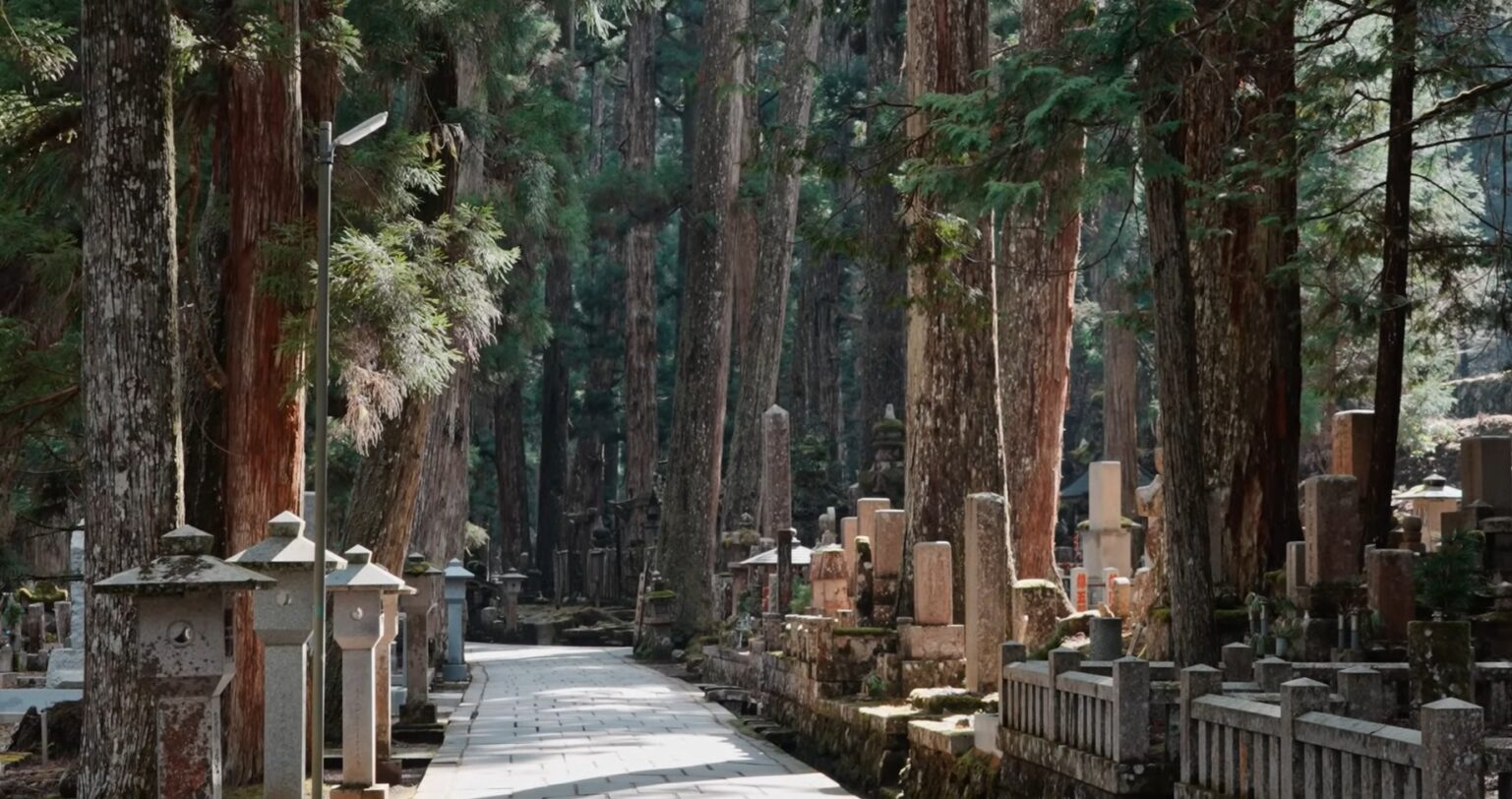
Okunoin Temple in Wakayama
Nestled in the forested mountains of Mount Koya in Wakayama, Japan, Okunoin Temple is one of the country’s most sacred and spiritually significant sites. It is the resting place of Kobo Daishi, the founder of Shingon Buddhism, who is believed to be in eternal meditation within the temple’s mausoleum. The surrounding cemetery, the largest in Japan, stretches over two kilometers and contains more than 200,000 tombstones, offering a serene and mystical atmosphere where centuries of history, faith, and reverence converge.
When visiting this temple, you will wander through a nearly 2-kilometer-long cobblestone path lined with over 200,000 graves and memorials. It is the final resting place for a wide range of individuals, including feudal lords, samurai, monks, and even common people, all united by their devotion to Kobo Daishi and the hope of attaining enlightenment.
Over the centuries, many people have chosen to be buried or have memorials placed here, believing that resting near Kobo Daishi would bring them spiritual closeness and blessings in the afterlife. Because of this, it is widely regarded as one of the most sought-after and spiritually significant burial places in Japan. Corporations have even decided to establish graves or memorials there, adding to its prestige.
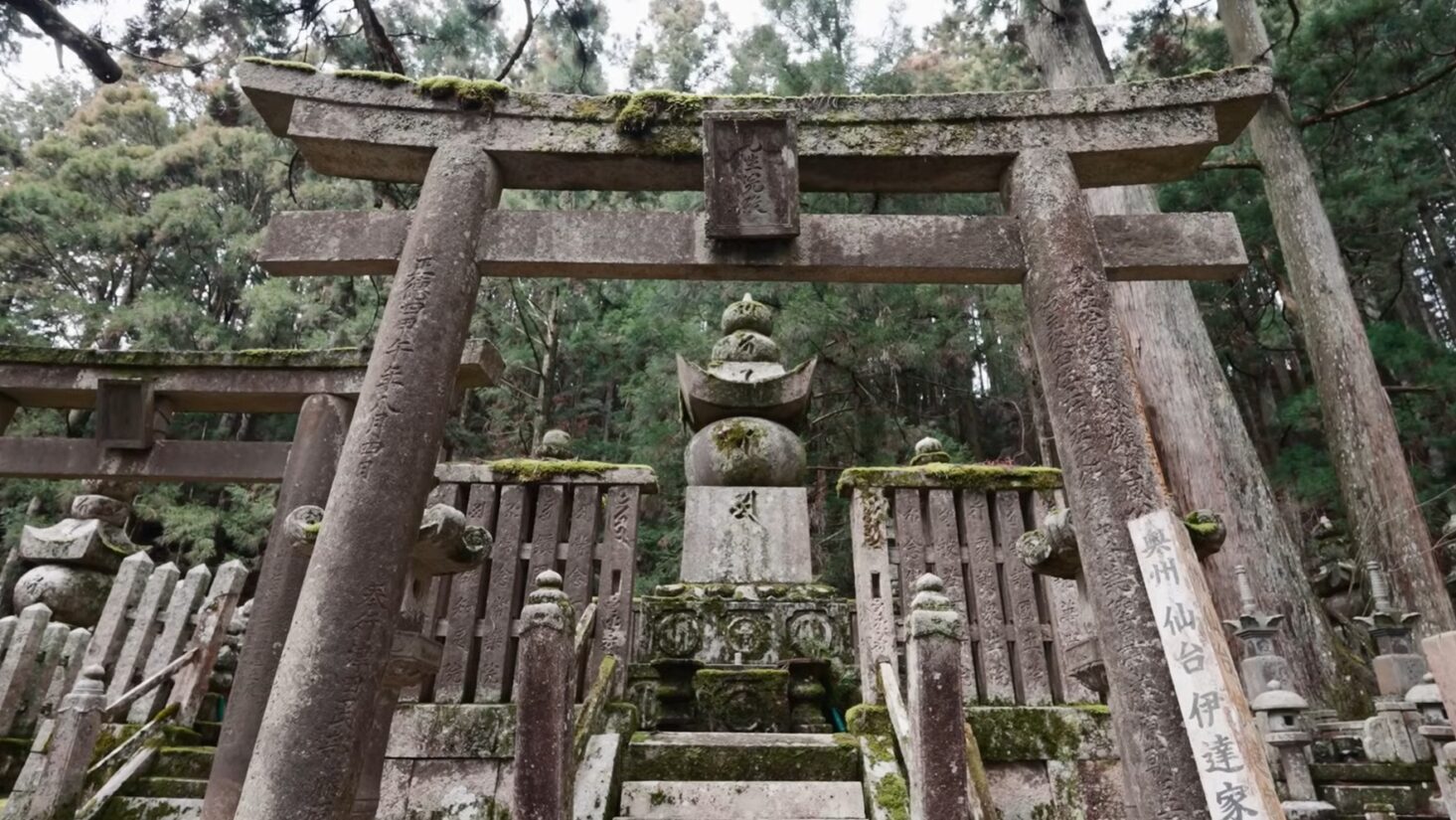
Okunoin can be visited year-round, and is open almost daily. Gokusho, the offering hall, is open year-round and is where the meals are prepared for Kobo Daishi. The Lantern Hall, Torodo, known for its many lanterns, one of which is said to have been burning for over 1,000 years, is also open year-round. Entry is free.
While Okunoin is open to the public, it is a sacred site. Visitors are encouraged to maintain a respectful demeanor, especially during ceremonies and in the presence of worshippers. Photography is generally prohibited in certain areas, such as the Gobyo Bridge, to preserve the sanctity of the space.
For more information, please visit the official Koyasan website.
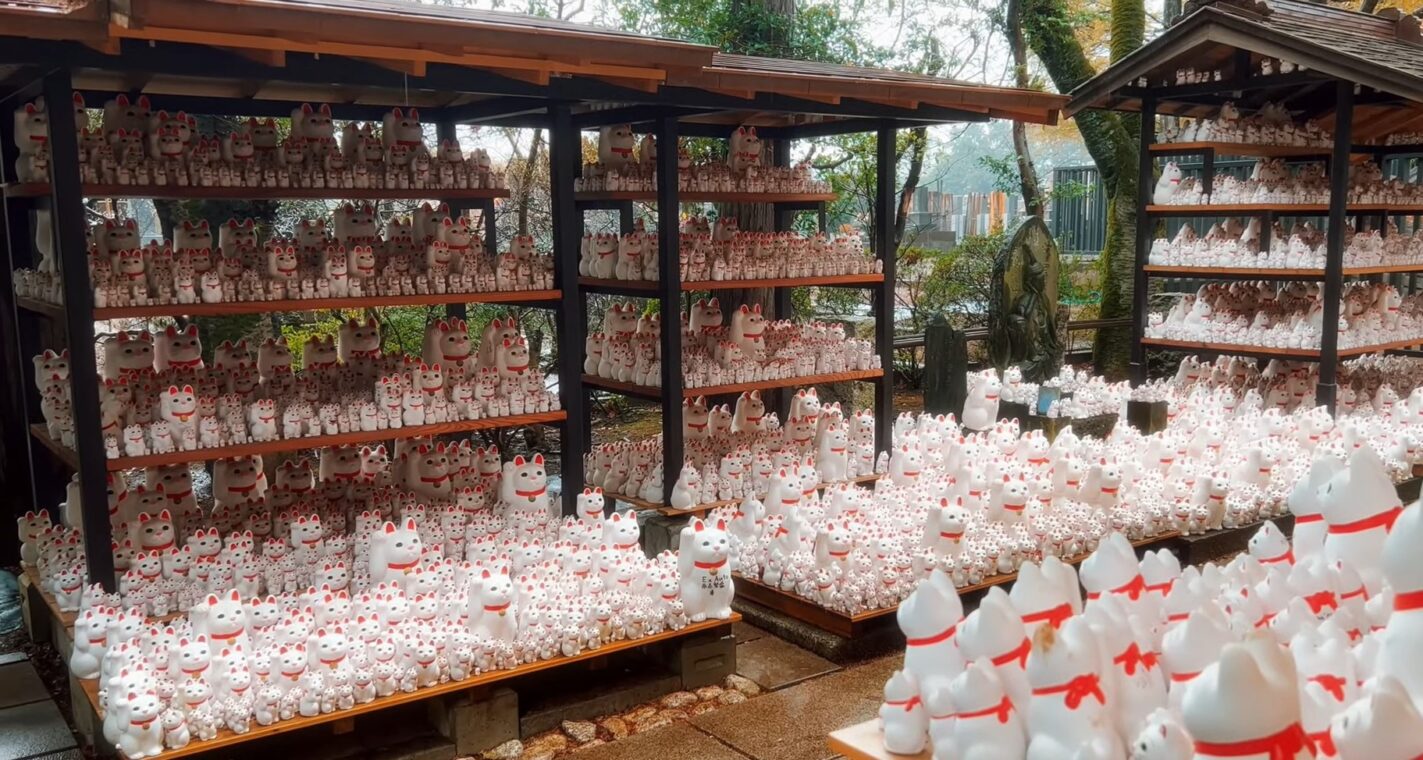
Gotokuji Temple in Tokyo
Gotokuji Temple is a historic Buddhist temple established in 1480 and is located in Setagaya, Tokyo. It is renowned as the birthplace of the iconic maneki-neko, or “beckoning cat” figurine, giving this Temple the nickname of “Cat Temple”. This charming temple blends traditional architecture with a whimsical atmosphere, as thousands of maneki-neko statues are placed around its grounds by visitors. Steeped in legend and local culture, Gotokuji offers a peaceful retreat from the city’s bustle and a unique glimpse into Japan’s folkloric traditions.
The temple’s association with the maneki-neko stems from a popular Edo-period legend. It is said that during a thunderstorm, a cat at Gotokuji Temple beckoned Lord Ii Naotaka into the temple for shelter. Grateful for the cat’s gesture, the lord later supported the temple’s reconstruction and designated it as the family temple. The cat was enshrined as the “Fortune-Inviting Kannon,” and the temple became a symbol of good luck and prosperity.
Today, many people visit this temple to see the thousands of cat statues, as well as to pray for family well-being, business success, and happiness. There is a dedicated area where thousands of maneki-neko figurines are displayed, donated by visitors whose wishes have been fulfilled. These figurines vary in size and are often left as expressions of gratitude.
Visitors to this temple can purchase maneki-neko statues and good-luck charms at the temple’s shop. Notably, Gotokuji’s maneki-neko statues do not hold a coin, symbolizing that while the cat brings opportunities, it is up to individuals to create their own fortune.
Gotokuji Temple is open daily from 6:00 AM to 6:00 PM and is free to enter.
Whether you’re interested in Japanese folklore, Buddhism, or simply enjoy the charm of cats, Gotokuji Temple offers a serene and culturally rich experience.
For more information, please visit the official Gotokuji Temple website.
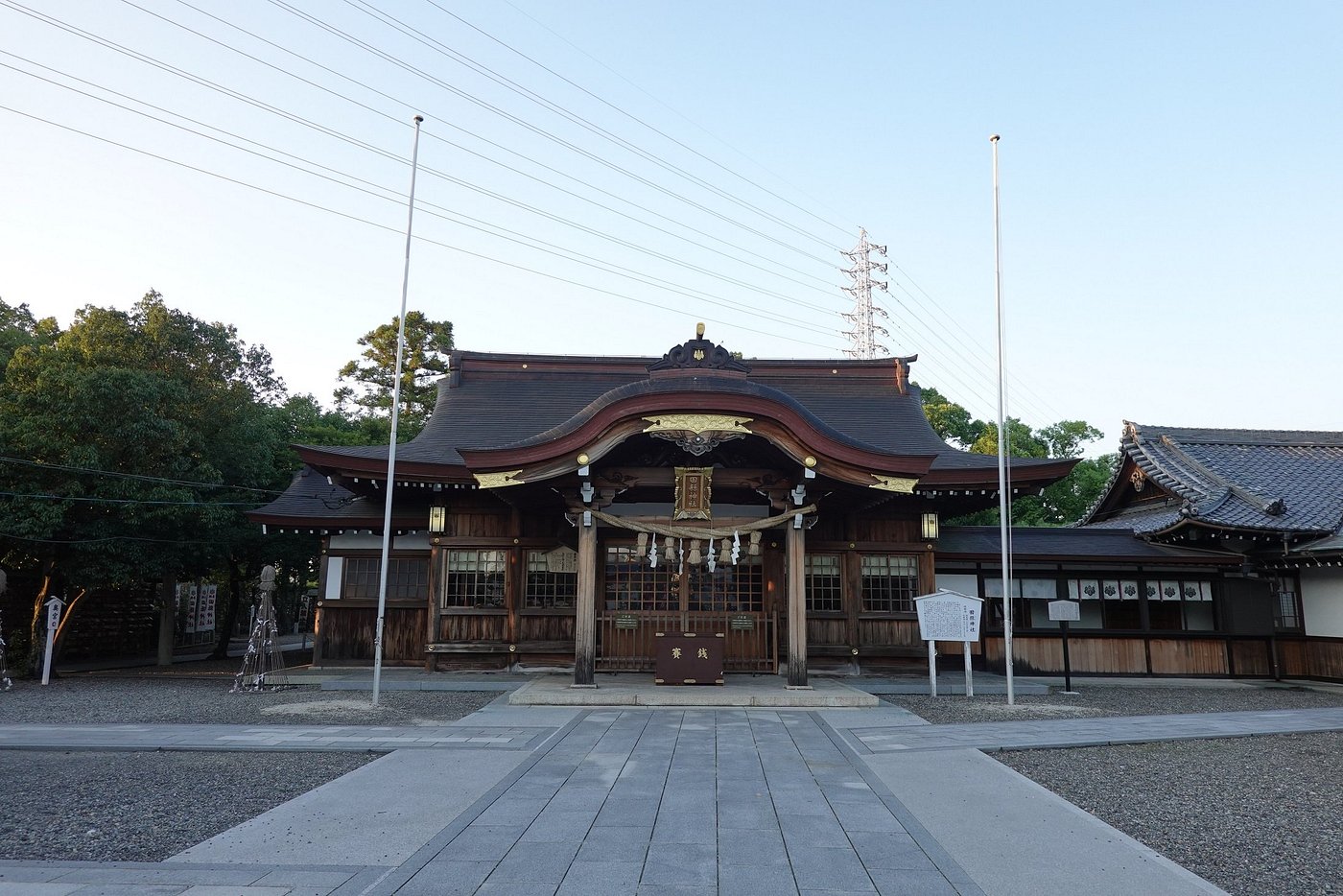
Tagata Shrine in Aichi
Tagata Shrine in Komaki City, Aichi Prefecture, is a one-of-a-kind destination known for its bold celebration of fertility, life, and prosperity. Dedicated to the deities Mitoshi-no-kami, the god of bountiful harvests, and Tamahime-no-mikoto, the goddess of prosperity and fertility, the shrine is renowned for its unique fertility rituals. Tagata Shrine offers a thrilling glimpse into Japan’s more uninhibited and joyful side of spiritual celebration.
Each March 15th, it becomes the center of Japan’s famous Honensai, or Harvest Festival, which is a vibrant, lively festival where enormous phallic symbols are paraded through the streets to honor agricultural abundance and human fertility. The festival features a large wooden phallus, over 2 meters long and 60 cm in diameter. This “grand phallus-shaped object” is carried on a portable shrine by men of “unlucky ages” according to Japanese superstition.
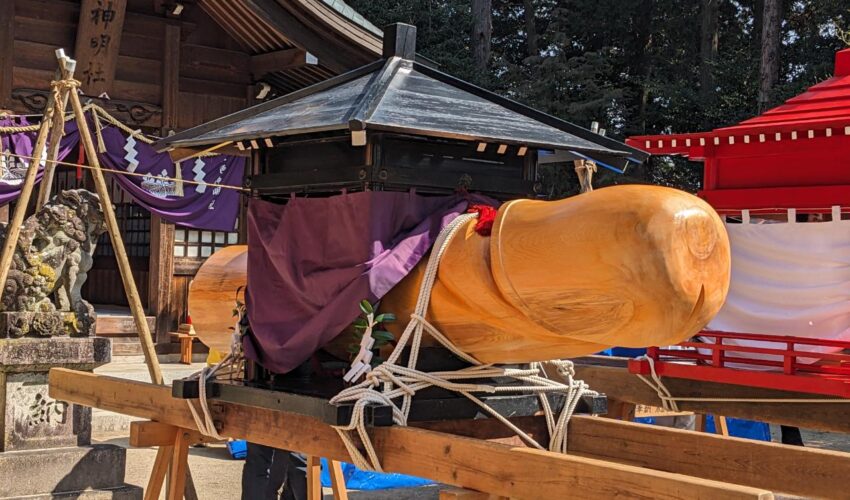
The shrine is adorned with various phallic symbols, including carvings and statues, reflecting its association with fertility. One of the main objects of worship inside the shrine is a large wooden phallus. You can find small wooden luck charms in the shape of phalluses of various sizes and colors on sale here, which make for an… interesting souvenir. There are also pastries and sweets of a similar shape for sale here.
Tagata Shrine offers a fascinating glimpse into Japan’s unique cultural and spiritual traditions, particularly those related to fertility and agricultural prosperity. Its annual Hōnensai festival draws visitors from around the world, eager to witness this distinctive celebration.
For more information on Tagata Shrine and the Hōnensai festival, check out their website here.
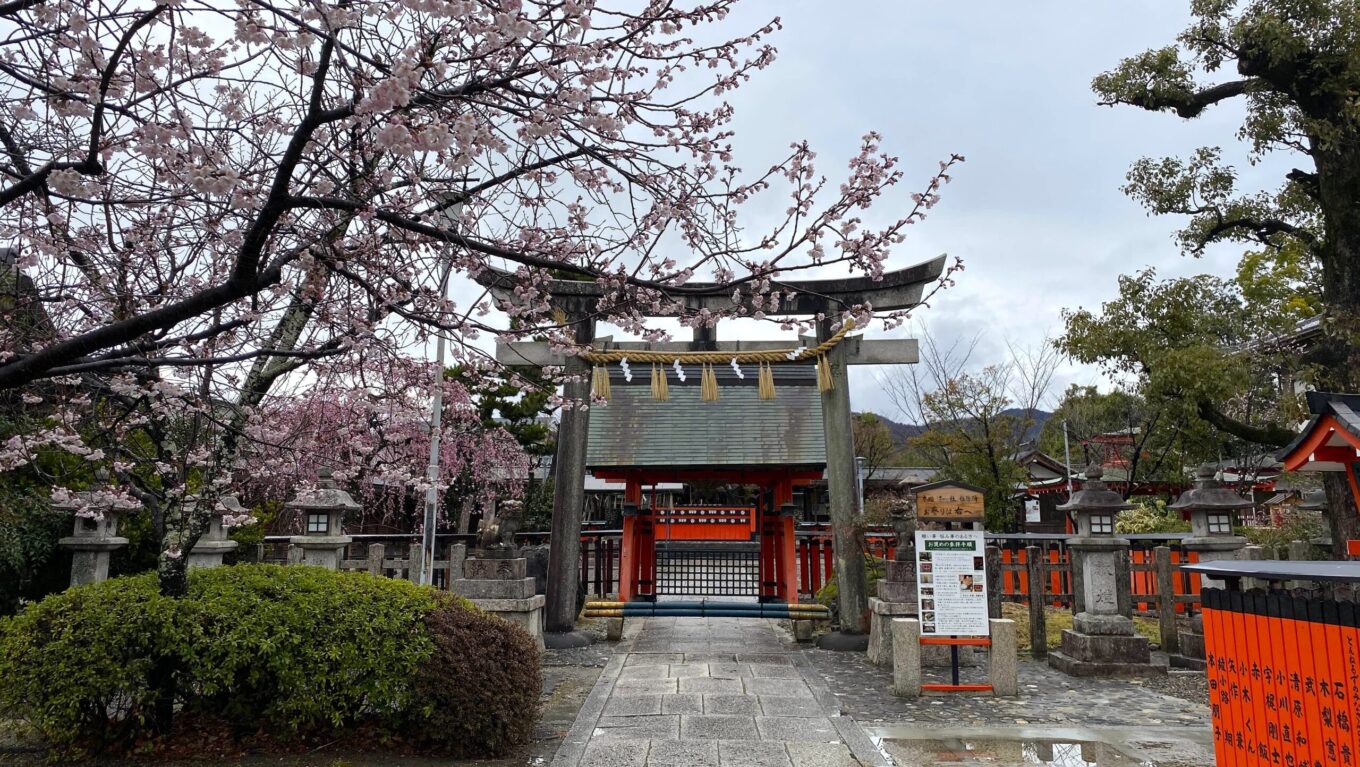
Kurumazaki Jinja Shrine in Kyoto
Kurumazaki Jinja is a historic Shinto shrine located in Kyoto’s Arashiyama district, known for its deep ties to the performing arts and creative success. It is uniquely dedicated to the god of entertainment and the arts, making it a spiritual hub for performers, musicians, and artists across Japan. Its main deity, Ame-no-Uzume-no-Mikoto, is the Shinto goddess of mirth, performance, and celebration, and is widely considered the patron of entertainers.
Over the years, the shrine has become especially popular among celebrities and stars in Japan’s entertainment industry, many of whom visit to pray for success, protection, and longevity in their careers. It’s common to find wooden plaques and votive offerings inscribed with wishes for fame, creative inspiration, or successful performances, often left by well-known figures.
The shrine also features a special area called the Geino Asama Shrine, specifically devoted to performing artists. This deep connection with the creative world makes Kurumazaki Jinja not only a spiritual site, but also a cultural landmark where tradition and modern fame intersect.
If you’re an aspiring actor, musician, performer, or simply someone chasing a dream in the entertainment world, then Kurumazaki Jinja is the perfect place to seek inspiration.
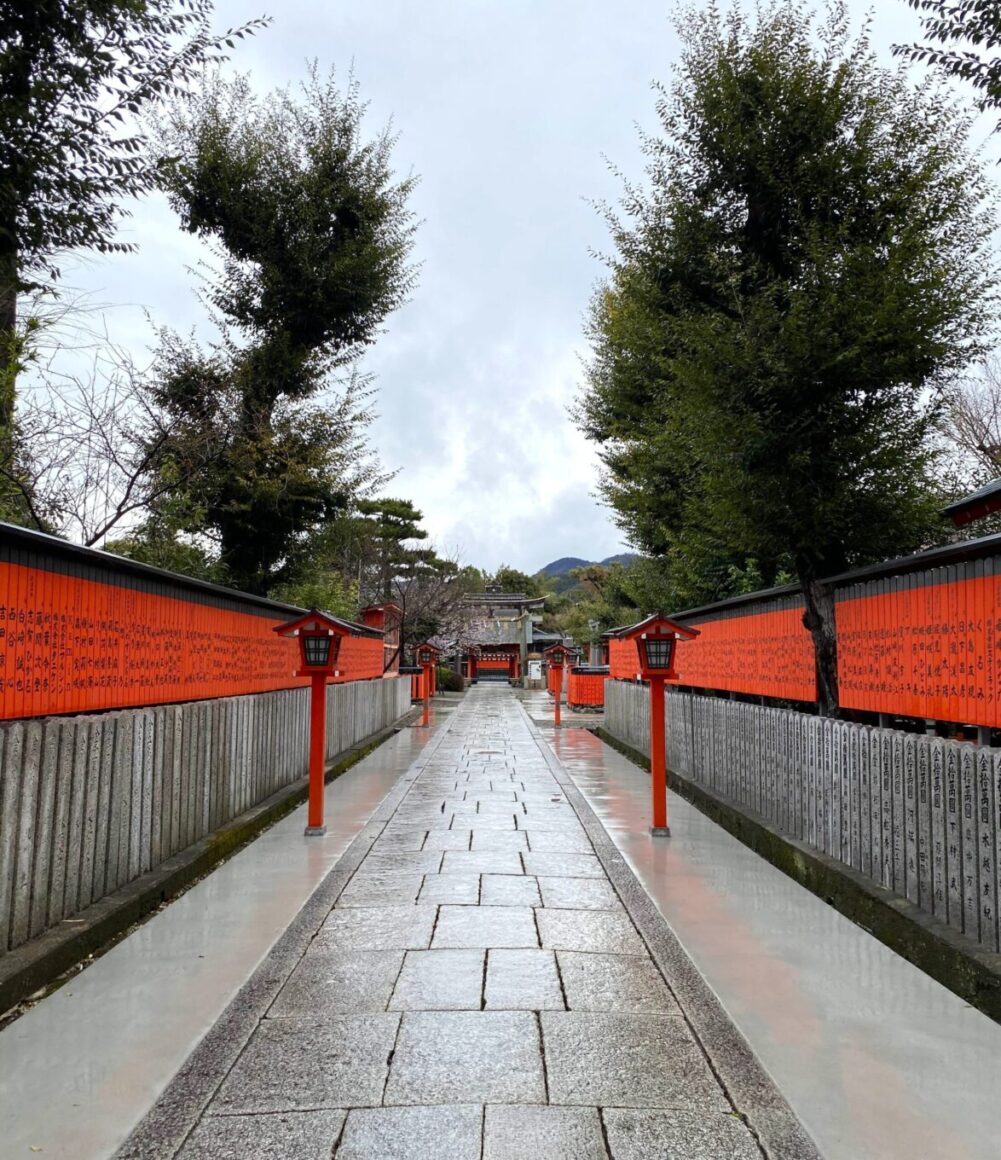
Admission to this shrine is free, and it is right next to Kurumazaki-jinja Station on the Randen Arashiyama Line, making it easily accessible.
Namba Yasaka Shrine in Osaka
Namba Yasaka Shrine, tucked away in the heart of Osaka’s bustling Namba district, is a hidden gem known for its striking and unusual architecture. It features a giant lion head-shaped stage towering over the shrine grounds.
This massive lion head, standing 12 meters tall and called “Shishiden”, is believed to “devour” evil spirits and bring good luck, particularly in business and academic success. The Shishiden serves as a stage for various traditional performances, including Kagura (Shinto music and dance), lion dances, and Iaido (Japanese swordsmanship). Unlike more traditional shrine aesthetics, Namba Yasaka blends bold design with spiritual symbolism, making it one of the most visually memorable and unique Shinto shrines in Japan.
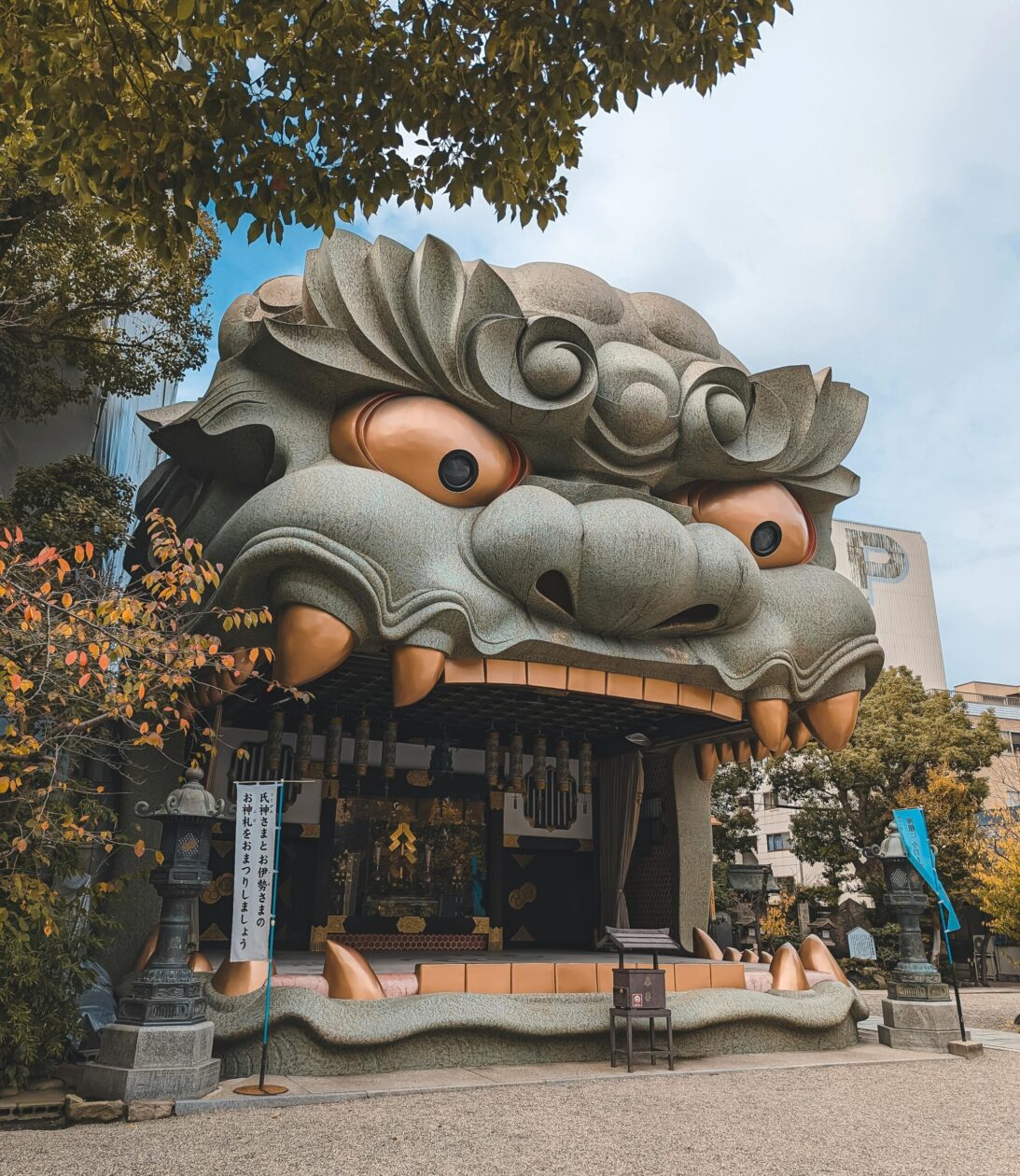
One interesting festival that happens at this shrine is the Tug-of-War Ritual, called Tsunahiki Shinji. It is held annually on the third Sunday of January, and commemorates the folklore of Susanoo-no-Mikoto’s victory over the serpent deity Yamata-no-Orochi. Participants engage in a tug-of-war using a giant rope shaped like a serpent, symbolizing the year’s blessings. Recognized as an intangible folk cultural asset, this event has been celebrated since the Edo period. If you’re traveling in Japan in late January, be sure to check this out!
Namba Yasaka Shrine offers a unique blend of spiritual heritage and architectural wonder, making it a must-visit destination for those exploring Osaka’s cultural landscape.
Be sure to visit their official website for more information! (Japanese language only) Alternatively, visit this official Osaka tourist site for information in English.
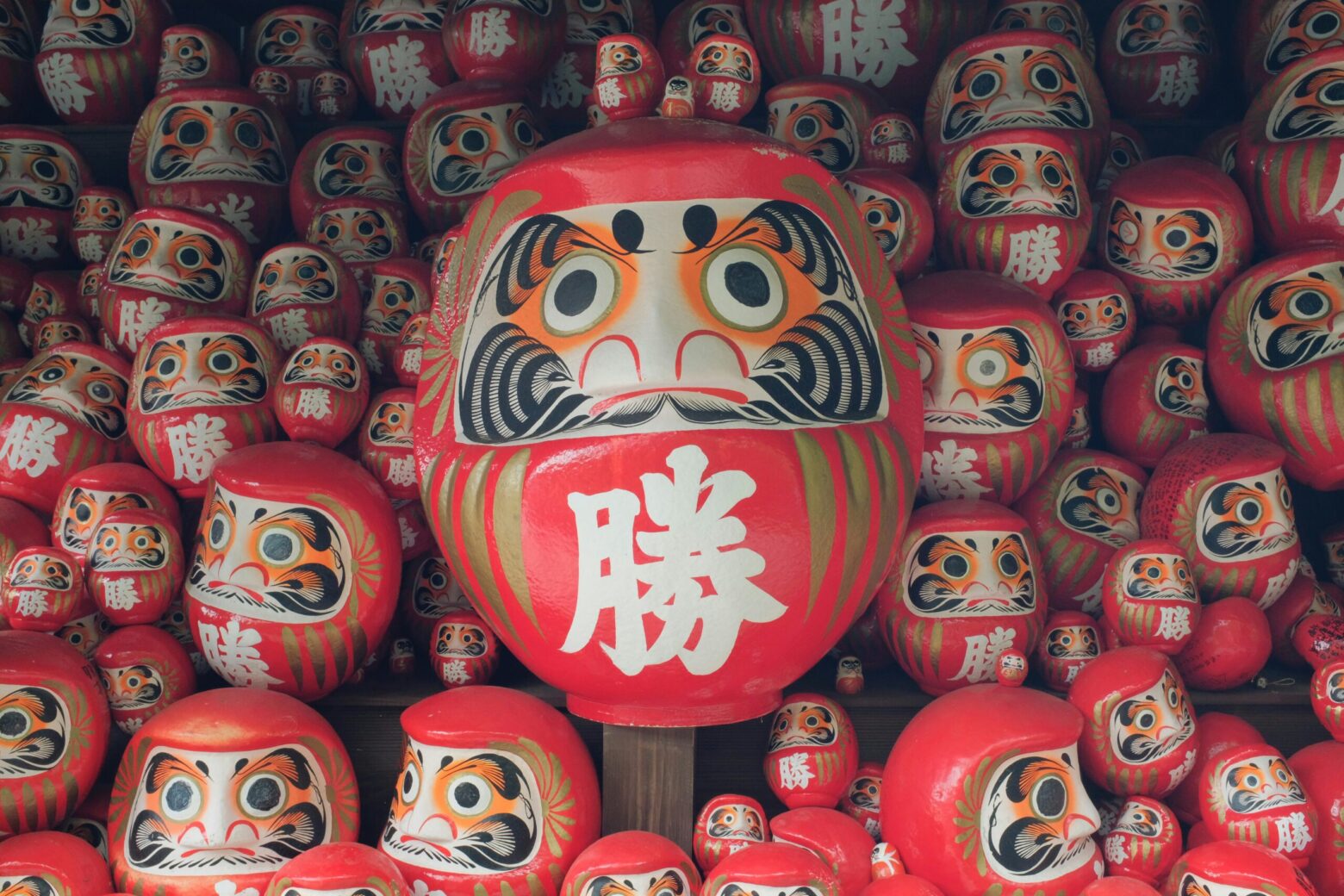
Katsuo-ji Temple in Osaka
Katsuo-ji Temple, located in the tranquil hills of Minoh just outside Osaka, is a centuries-old Buddhist temple with a unique reputation as the “Temple of Victory.”
The temple’s name, “Katsuo-ji,” derives from the Japanese word “katsu”, meaning “victory,” reflecting its association with triumph and good fortune. Due to its strong association with success in both personal and professional endeavors, it draws visitors who seek good fortune, especially before exams, competitions, or new ventures.
The temple grounds are famously dotted with thousands of red daruma dolls, each left behind by visitors as a symbol of perseverance and fulfilled wishes. Blending spiritual tradition with vibrant visual charm, Katsuo-ji offers a one-of-a-kind experience for those looking to turn their determination into achievement.
Visitors can purchase a daruma doll, write a wish on its base, and color in one eye. Once the wish is fulfilled, the second eye is colored in, and the completed daruma is often left at the temple as an offering of gratitude.
A unique spiritual practice at Katsuo-ji involves walking around a set of rocks in a circular path, both clockwise and counterclockwise, seven times each. This ritual is believed to bestow wisdom and power upon the participant. Try it out yourself if you plan on going!
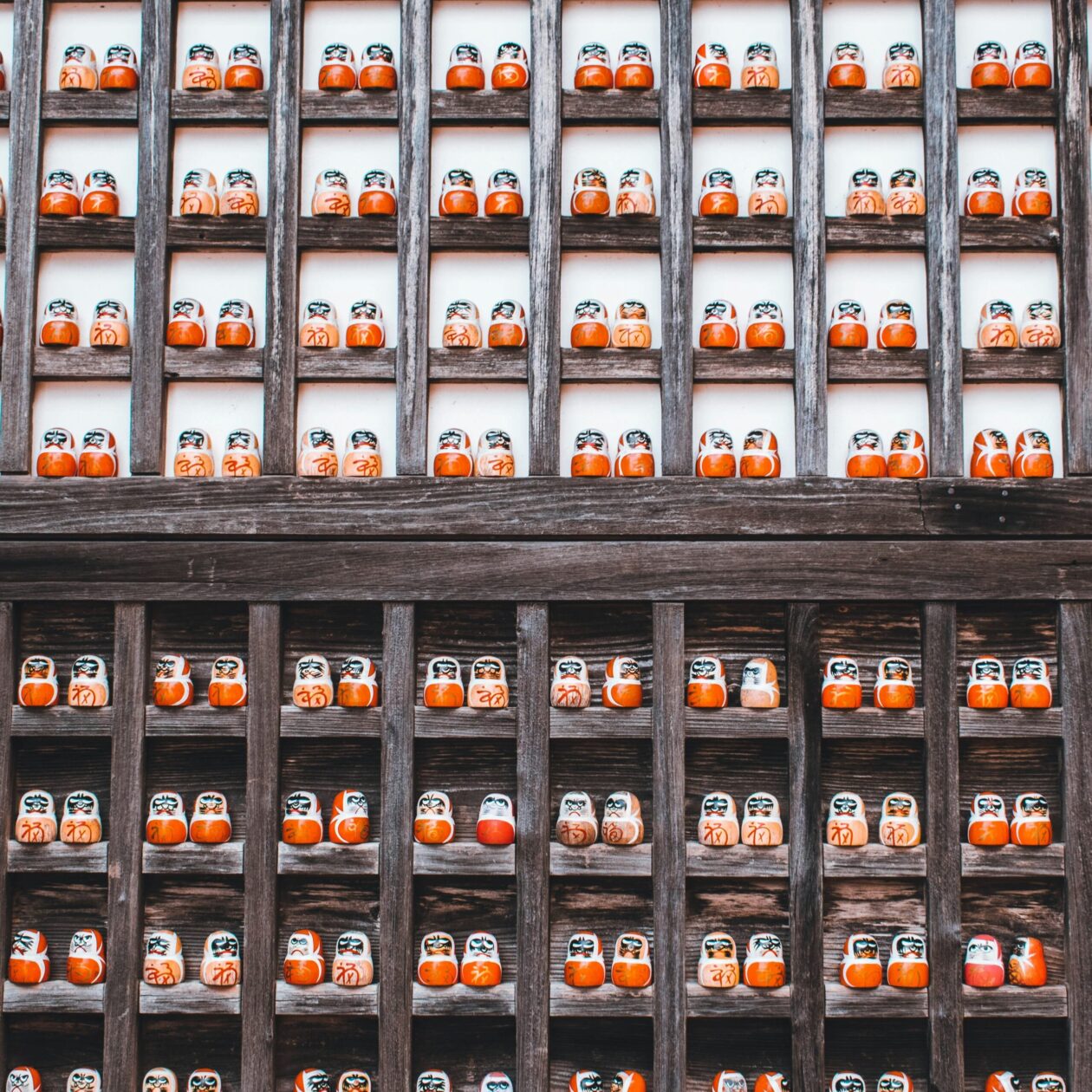
The surrounding Minoo Park, known for its 33-meter-high waterfall, offers scenic hiking trails that lead to the temple. Why not enjoy a hike in Japan’s beautiful nature after checking out the temple?
This temple is a 35-minute bus ride from Senri-Chuo Station on the Hankyu Senri Line to Katsuoji-mae bus stop. It opens daily from about 8:00 AM to 5:00 PM, and costs ¥400 to enter.
Katsuo-ji Temple offers a tranquil retreat amidst nature, rich in cultural and spiritual significance. Whether seeking personal success, enjoying the seasonal beauty, or participating in unique rituals, a visit to this historic temple provides a meaningful experience.
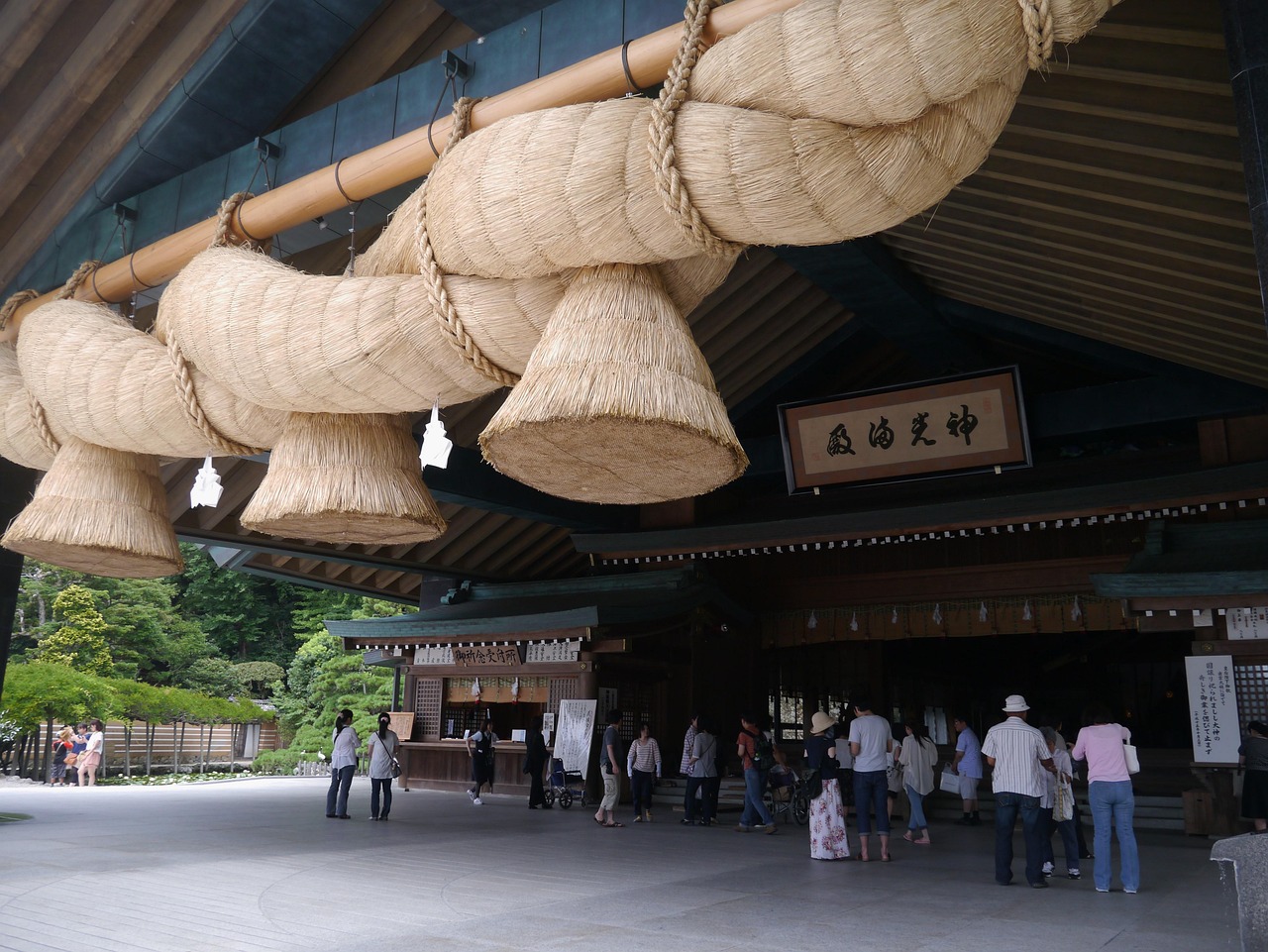
Izumo Taisha Shrine in Shimane
Izumo Taisha, located in Shimane Prefecture, is one of Japan’s oldest and most important Shinto shrines. It is dedicated to Okuninushi, the deity of nation-building, agriculture, medicine, and matchmaking. Its origins trace back to the early 700s, as documented in ancient chronicles. The shrine’s architectural style, known as “taisha-zukuri”, is the oldest indigenous Japanese shrine architecture, characterized by a raised main hall with a bark-covered roof. The current main hall was rebuilt in 1744.
The shrine holds great cultural and spiritual significance, especially in myths related to the creation of Japan. Izumo Taisha is also a key site during the annual Kamiari Festival, when it is believed that all the Shinto gods from across Japan gather there. Its architecture, history, and role in Japanese mythology make it a vital part of Japan’s religious heritage.
In Shinto belief, the gods (kami) gather at Izumo Taisha each year during the 10th lunar month, known locally as Kamiarizuki (the month with gods), while in the rest of Japan it is called Kannazuki (the month without gods).
The gods are believed to come to Izumo Taisha for a divine assembly where they hold meetings to decide important matters, particularly those related to en-musubi (the tying of fates or relationships), such as human relationships, marriages, and destinies. This belief is rooted in the shrine’s association with Okuninushi, the deity of connections and matchmaking.
This annual gathering highlights Izumo Taisha’s spiritual role as a center of cosmic order and harmony among the deities.
If you plan on going to Izumo Taisha, make sure to follow their unique prayer ritual, where you must bow twice, clap four times, and bow once more. This differs from most other shrines, where you would bow twice, clap twice, and bow once more when praying.
Izumo Taisha is a 20-minute train ride from Matsue to Izumo Taisha-mae Station. If you’re in Matsue, be sure to visit the beautiful castle they have there!
Izumo Taisha Shrine offers a deep connection to Japan’s spiritual heritage, making it a must-visit destination for those interested in the nation’s rich cultural traditions.
For more information, visit their official website!
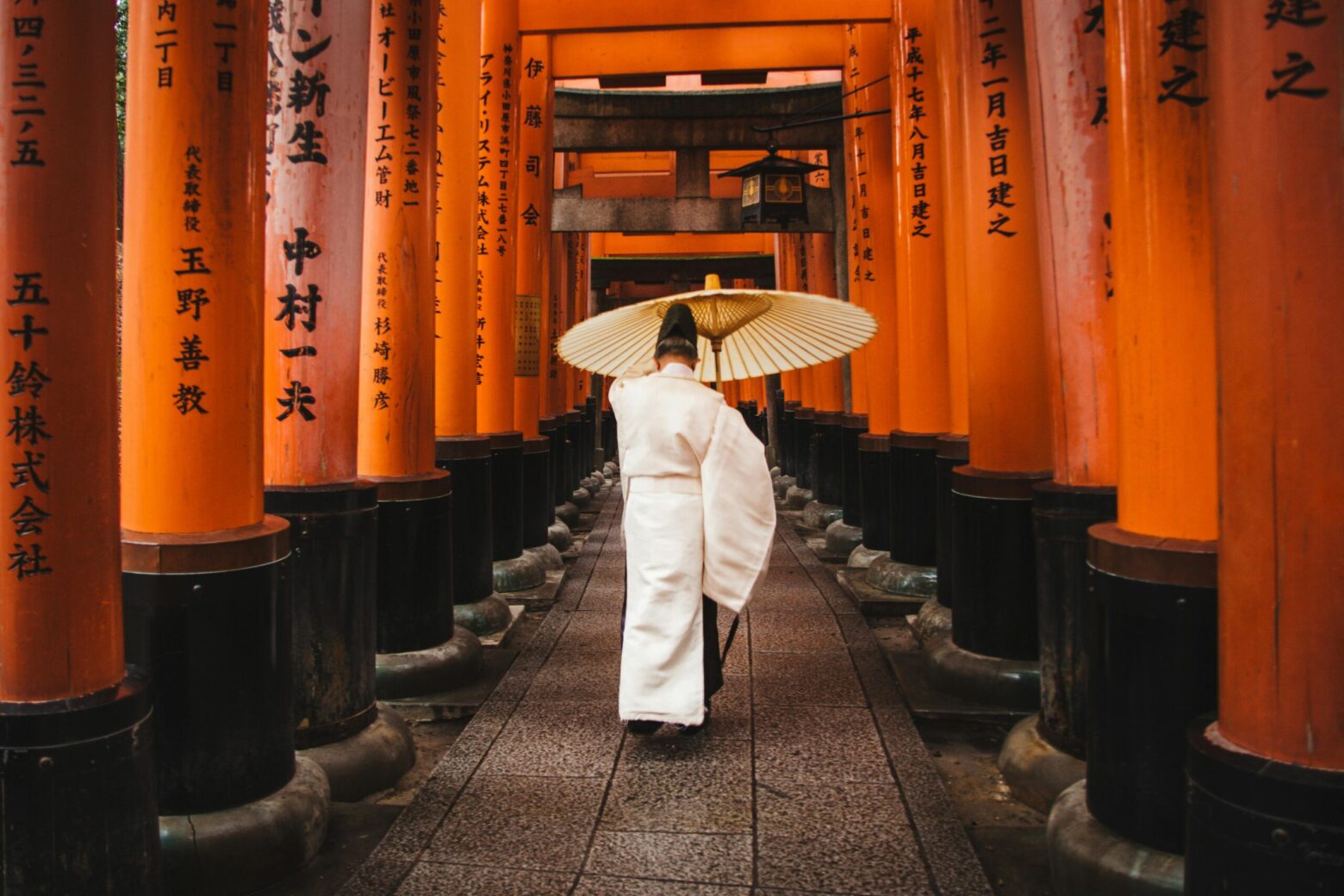
Whether you’re drawn to the whimsical charm of thousands of beckoning cats at Gotokuji Temple, the bold symbolism of Tagata Shrine’s fertility festival, or the ancient mysticism of Izumo Taisha, Japan’s most unique temples and shrines offer far more than a typical sightseeing experience. These sacred sites weave together history, legend, and artistry, each reflecting a different facet of Japan’s rich spiritual and cultural landscape.
If you’re seeking a journey that transcends the ordinary, let these extraordinary places guide you through the heart and soul of Japan.
Interested in learning about other incredible sightseeing locations around Japan? Make sure to check out our other blog posts, such as our guide to the Nishiki Market, the history of Fushimi Inari, and an itinerary for 3 full days in Kyoto.
We also run food tours in Kyoto, Tokyo, and Osaka, so be sure to put those on your itinerary when you come to Japan!

